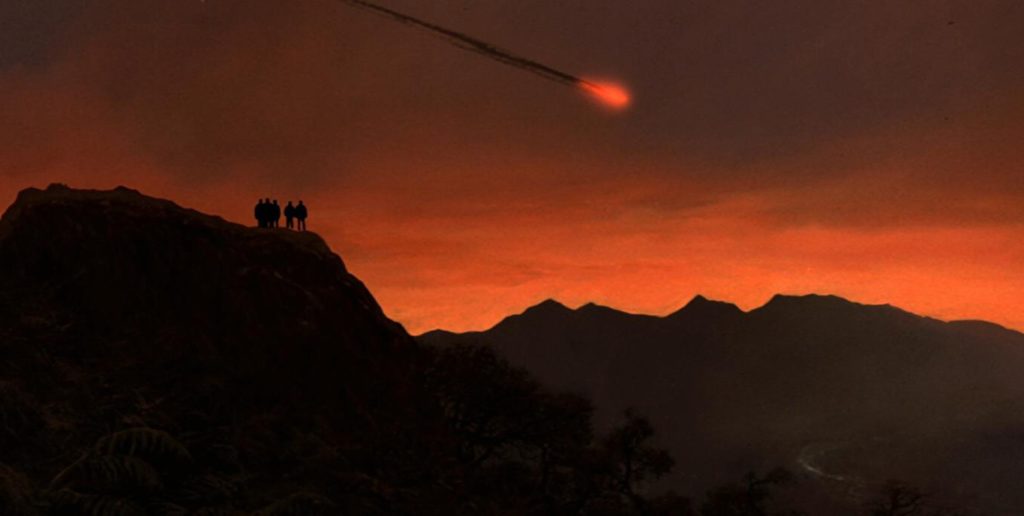
AUTHOR’S NOTE: this piece is loaded with spoilers on all things Star Trek, including (but not limited to) the original series and the first three reboot films. Beware.
The Star Trek franchise, after decades of TV episodes and movies, is full of tragic moments. A true Trek fan will not easily forget the death of Commodore Decker in the 1967 Original Series episode “The Doomsday Machine,” or the loss of Lieutenant Tasha Yar in the 1988 Next Generation episode “Skin of Evil.” Any self-respecting Trek fan will vividly remember Spock, dying at the end of Star Trek II: The Wrath of Khan, rasping, “I have been … and always shall be … your friend” or watching Captain James T. Kirk die on a lonely world a few films later. Assuming how devoted you are, you may even remember seething as Star Trek: Enterprise senselessly killed off its Chief Engineer, “Trip” Tucker, in the much-maligned series finale, “These Are the Voyages …”.
People haven’t been the only losses. Ships have been lost, too, including the ships of Star Trek: The Original series and Star Trek: The Next Generation. The latter met its end in the film Star Trek: Generations, but it is the former that occupies the greater place in Trek lore.
For true Trekkies (or Trekkers, if you want to get into that debate) the death of the original USS Enterprise in Star Trek III: The Search for Spock — the image above is from that scene — ranks right up there with the deaths of any other character. And I use the term death quite purposefully. Were the Enterprise nothing but a vehicle, the word destruction might be more appropriate. But the Enterprise is not just a vehicle. It is its own character, just as surely as Kirk or Picard or Sisko or any of the other leading figures of Star Trek. I know grown men who cried watching the Enterprise blow up.
That is a reality that the reboot Star Trek movies, under the hand of J.J. Abrams, fail to understand. For all the needling purists have engaged in over the re-characterization of certain people in the reboots, that is dwarfed, in my view, by the number done on their ship. More than just making Kirk more roguish or Spock more irrational, Abrams and his team have reduced the ship from a character to an object.
Roddenberry’s Enterprise
To fully understand this, you need to first consider how Star Trek originally depicted its flagship. The series creator, Gene Roddenberry, was a World War II Army Air Corps veteran who for a time flew the B-17 Flying Fortress. (Roddenberry was involved in a crash which killed two people, and subsequently became a crash investigator.)
His sense of ships as characters in their own right channeled in those famous first lines: “Space: the final frontier. These are the voyages of the starship Enterprise. Its five-year mission: to explore strange new worlds, to seek out new life and new civilizations, to boldly go where no man has gone before.” Note what is not mentioned in those words: the names of any people. Yes, Kirk and Co. eventually appear as part of the opening credits, but top billing goes to the ship. The ship was more important than Shatner, than Nimoy, than Ricardo Montalbán, than anyone. We see this regularly in the affection Chief Engineer Montgomery Scott displays for his beloved vessel during both the Original Series and the early films, and is seen again in the Enterprise of the Next Generation era.
In Roddenberry’s vision of the Enterprise, which persisted even after his death, the ship was many things. It was an explorer, boldly going into new places that other ships had never traveled. It was an adventurer, flying headfirst into uncertainty and possible danger. It was an investigator, trying to piece together a crucial mystery before time ran out. It was even a peacemaker, trying to bring an end to war and the senseless loss of life.
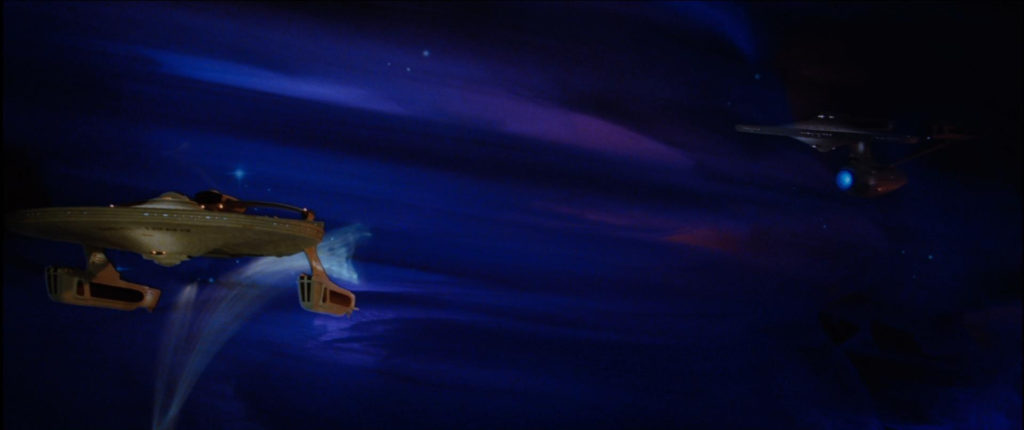
Perhaps most significantly, it was a fighter. The Enterprise found itself in plenty of battles over the decades, and more often than not was outgunned and overmatched: by Doomsday Machines, hyper-intelligent villains, god-aliens, Borg, and absurdly overpowered Romulan warships. And yet it never backed down. The ship always — always — punched back. It found weaknesses, overcame deficiencies, and used every trick in the book to grasp an edge. Sometimes the cost was high, but never did the ship go down any way but swinging.
Abrams’s Enterprise
When J.J. Abrams took charge of the Trek franchise, he immediately set about re-visioning the characters. Despite being a purist myself, it’s hard to argue with the need to shake things up. By the time of Star Trek: Enterprise in the early 2000s, the series had grown stale. Change requires risk-taking, and while I didn’t always like some of the things Abrams did — including shedding Roddenberry’s idea-centered plotlines for something more action-packed — clearly a lot of the mainstream moviegoing audience found it fresh and welcome.
Initially, my chief complaints with the reboots’ characters were of the way Kirk and Spock were altered. (Kirk’s changes were easily explained in the new timeline; Spock, not so much.) But as the second and third movies came out, I became increasingly aware of a more disturbing trend: a character was missing. The Enterprise of the Abrams era wasn’t an actor in these new dramas. Not even close.
In the first Star Trek (2009), the Enterprise was mostly a passive observer, watching as things went to doomsday.
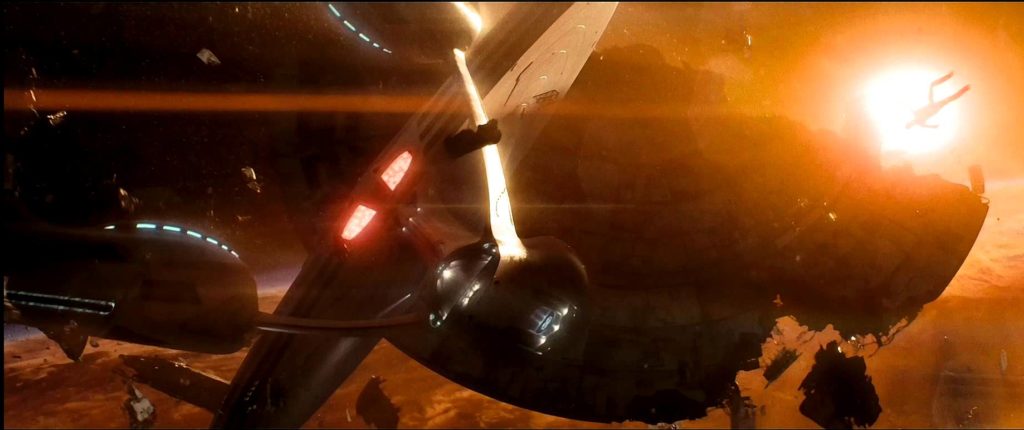
Then, in Star Trek Into Darkness, there was this:
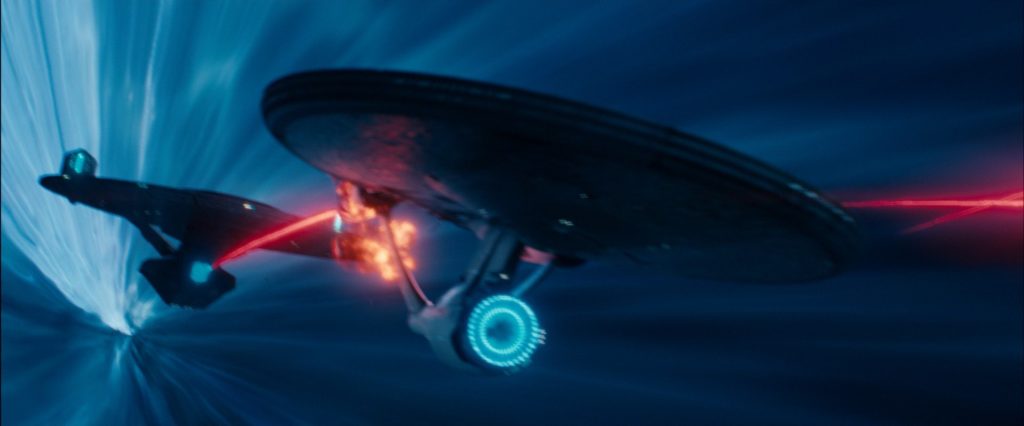
And then in Star Trek Beyond, there was this:
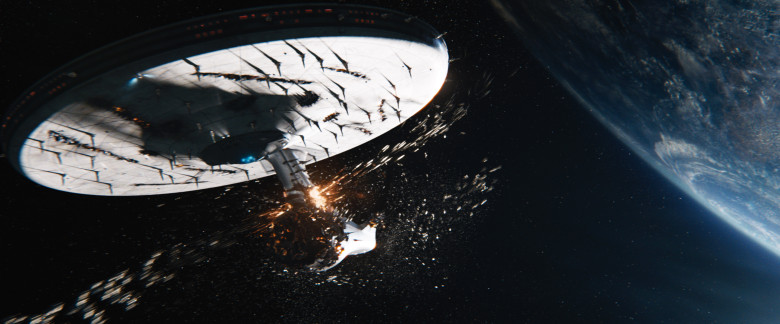
The first picture was from the “battle” at Vulcan. The second was from the “battle” against the USS Vengeance. The third was from the “battle” at Altamid. In all cases the word “battle” is a stretch, because the Enterprise didn’t even fire a shot in the first two encounters, and was firing for all of about five seconds in the third. In all cases, the Enterprise‘s impact on the scene was less than negligible … except, in the second and third, to sit there and get blown to pieces, its crew sucked out into space.
Gone was the ship as explorer, as adventurer, as investigator, as peacemaker. Gone was, most dramatically, the fighting. This Enterprise was nothing to be proud of, no resilient vessel to watch snatch victory from the jaws of defeat. This Enterprise was no active agent in the films. In the face of adversity, the Abrams version doesn’t just wilt … it’s a non-factor. This reboot Enterprise could almost have been removed from the films entirely with no loss. In Beyond, that’s mostly what happened.
Closing Thoughts:
Under Roddenberry, the Enterprise was its own character … maybe even the star character in many cases. Under Abrams, the Enterprise has morphed into a set-piece for action shots, more often than not as a punching bag. That is part of the soul of Star Trek that, at least to date, he and the others who have worked on the reboots don’t seem to get.
Or maybe he does. Maybe the ship is a character Abrams is all-too-happy to discard. In that case, that is one baby I wish hadn’t been thrown out with the bathwater.





Well said and quite accurate. It’s always disturbed me how quickly the Abrams crew loses practically every engagement they’re in.
Thank you Joshua, you just echoed Gene Roddenberry and my sentiment along with other life long Trekkers. I bought a Starlog magazine after Star Trek 3 started playing in theaters and Gene Roddenberry was very upset with Leonard Nimoy for destroying the Enterprise Nimoy recounted in the article. According to Nimoy, Gene told him that he considered the Enterprise as a cast member, that he should have the saucer detach from the engineering section rather than blowing up the entire ship. Nimoy said it was his decision to destroy the Enterprise for “emotional impact”, and I think he knew how it would affect the fans, mission accomplished. Well obviously some talented fans on YouTube have made tribute videos for the refit Enterprise and Barry C has produced 2 videos of the Enterprise’s rebirth which I personally enjoyed. My favorite tribute to the Enterprise is a YouTube video called “Beauty at any angle” by Riflevision. Credit to Andrew Probert for designing the refit Enterprise, a work of beauty at any angle. Thank you Joshua for your article.
P. S. note to the FX people on YouTube, the “lights” in the orange blocks throughout the ship, on the saucer, secondary hull and warp nacelles are reaction thrusters, see “Scott’s Guide to the Enterprise” tech manual.